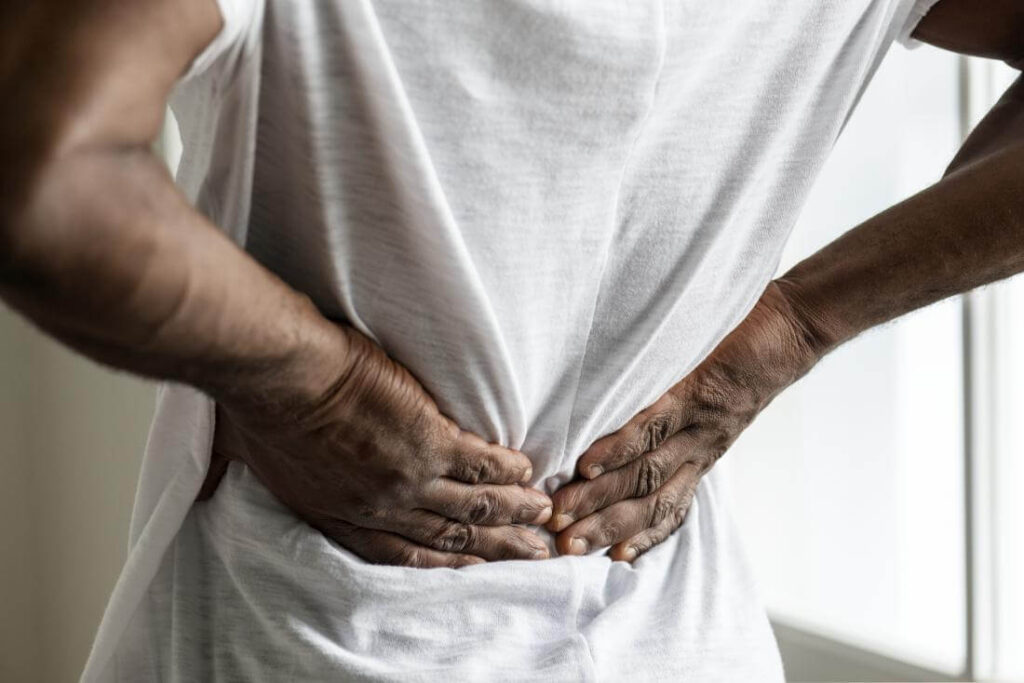Describe spinal stenosis.
A medical condition called spinal stenosis manifests as gaps or a narrowing of the spinal canal. The spinal cord and nerve roots are situated in the spinal canal, which is a void. This region may constrict, putting pressure on the spinal cord and nerves, which may result in a number of symptoms, particularly in the back and legs. Two conditions that might cause the narrowing of the spinal canal are herniated discs and spinal injuries. Another frequent cause is aging-related changes, such as ligament thickening and bone spur development. An individual may have discomfort, numbness, weakness, and movement problems as a result of spinal stenosis, which can affect any portion of the spine, including the neck and lower back. Understanding spinal stenosis is crucial for a proper diagnosis and effective treatment of this common source of back pain.
Various forms of spinal stenosis
Thoracic Stenosis:
The thoracic spine, or middle part of the spine, is affected by thoracic stenosis. Less frequently occurring than cervical and lumbar stenosis is this kind of stenosis. Compression of the spinal cord or nerve roots in the thoracic region may result from thoracic stenosis, which can produce symptoms including mid-back pain, numbness or tingling in the chest or abdomen, and issues with bowel or bladder function.
Foraminal Stenosis:
The neural foramen, which are tiny apertures situated on either side of the vertebrae, are referred to as foraminal stenosis when they get congested. The spinal nerves are able to emerge from the spinal canal thanks to these apertures. Depending on where the stenosis is, foraminal stenosis can compress the spinal nerves as they travel through the constricted foramen and cause symptoms like radiating pain, numbness, or paralysis in the arms or legs.
Central Stenosis:
The central spinal canal itself narrows as a result of central stenosis. Any part of the spine, such as the cervical, thoracic, or lumbar regions, may experience this. The spinal cord may get compressed as a result of central stenosis, resulting in symptoms including pain, numbness, weakness, or issues with balance and coordination.
Spinal stenosis signs and symptoms
- Pain radiating from the back or neck into the arms, shoulders, buttocks, or legs is a symptom of spinal stenosis. This pain can travel down the course of the damaged nerve and is frequently described as a shooting or scorching feeling.
- Lumbar spinal stenosis is characterized by neurogenic claudication. It describes leg discomfort that gets worse with walking or extended standing, including pain, cramping, weakness, or numbness. These symptoms are often relieved by resting or bending forward.
- Spinal stenosis can cause a loss in sensation in the affected areas in addition to numbness or tingling. This may impair your capacity for feeling vibration, temperature, or touch.
- In order to relieve pain or discomfort, people with spinal stenosis may adjust their posture. To relieve pressure on the spinal nerves, people could lean forward or assume a flexed position, for instance.
Identification of spinal stenosis
- These tests entail actions or postures that can mimic or amplify spinal stenosis symptoms. For instance, the patient can be asked to walk or stand for a while to see if their symptoms get worse while doing these things.
- An epidural steroid injection can occasionally be utilized for both diagnostic and therapeutic purposes. To minimize inflammation and treat symptoms, a local aesthetic and steroid medicine are administered into the epidural region. If the injection significantly reduces your pain, it can support your diagnosis of spinal stenosis.
- In Flexion-Extension radiographs, the spine is photographed when it is both flexed (bent forward) and extended (bent backward). This can aid in assessing the spine’s stability and locating any aberrant movement or instability linked to spinal stenosis.
- A standing or dynamic MRI is carried out with the patient standing up, in contrast to a typical MRI. By doing so, spinal stenosis and any symptoms that can be made worse by weight-bearing activities can be assessed more precisely.
Options for Treating Spinal Stenosis
The objectives of spinal stenosis treatment are to improve function, reduce symptoms, and improve the patient’s quality of life. The initial line of treatment is usually non-surgical and may involve medicine to lessen pain and inflammation, physical therapy to increase strength and flexibility, and the use of stabilizing aids like braces or canes. Another option for short-term pain alleviation is epidural steroid injections. Surgical procedures may be thought about if non-surgical methods are insufficiently relieving.
In order to relieve pressure on the spinal nerves, decompression surgery entails removing the source of compression, such as bone spurs or thicker ligaments. Spinal fusion surgery may be advised to stabilize the spine in situations where there is spinal instability or major structural anomalies. Self-care and lifestyle changes are essential for controlling spinal stenosis. Keeping a healthy weight, exercising frequently but gently, utilizing excellent posture and body mechanics, and employing pain-relieving methods like hot or cold packs are all beneficial tactics. In the end, the method of treating spinal stenosis depends on the degree of the symptoms, the patient’s preferences, and personal health variables. The best course of treatment for spinal stenosis must be decided after consulting with a medical expert.
Conclusion
Last but not least, spinal stenosis is a frequent ailment that can result in back pain and other uncomfortable symptoms. A customized treatment plan that takes into account each patient’s unique needs and goals must be created by healthcare experts and patients working closely together. People with spinal stenosis can make educated decisions and take the necessary steps to manage their disease by becoming familiar with the many available therapies.

